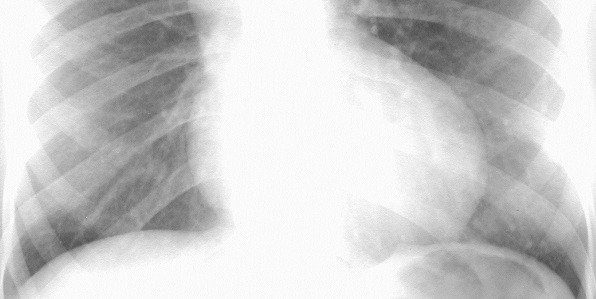Tetralogy of Fallot

Tetralogy of Fallot is a rare disorder characterized by 4 heart defects that are present at birth.
These malformations affect the structure of the heart and cause it to pump oxygen-poor blood to the rest of the body.
Infants and children with this disease usually have a blue tint to their skin because their blood is not delivering enough oxygen to the tissues.
The clinical condition is in most cases diagnosed in infancy or soon after.
It is also possible for the disease to be detected subsequently, depending on the severity of the defects and the severity of the symptoms.
With early diagnosis and appropriate treatment, most affected children lead relatively normal lives, although they require periodic medical monitoring and may require restriction of physical activity.
What are the symptoms?
Their severity varies depending on the degree of obstruction of blood flow from the right ventricle of the heart and into the lungs.
Signs and symptoms may be expressed in:
• Bluish discoloration of the skin due to low-oxygen blood flow /cyanosis/;
• Shortness of breath and rapid breathing, especially while eating;
• Loss of consciousness /fainting/ ;
• Abnormal, rounded shape of the nail bed;
• Poor weight gain;
• Irritability;
• Prolonged crying;
• Heart murmur;
• Fatigue quickly while playing;
Sometimes sick babies suddenly develop deep bruising on their skin, nails and lips after crying, feeding, such as when they have a bowel movement or kicking their legs after waking up.
These attacks of the disease are caused by a rapid decrease in the amount of oxygen in the blood. Young and older children may instinctively crouch when they feel short of breath.
Squatting increases blood flow to the lungs. These attacks are more common in babies aged around 2-4 months.
When should you seek medical attention?
Seek medical attention if you notice that your baby has the following symptoms:
• Difficulty breathing;
• Change in skin color that takes on a bluish hue;
• Loss of consciousness or fainting;
• Weakness;
• Unusual irritability;< /p>
If your baby turns blue, that is, develops cyanosis, immediately turn him on his side and push his knees up to his chest. This helps increase blood flow to the lungs and call 112.< /p>
What are the causes of tetralogy of Fallot?
The disease occurs during intrauterine growth of the fetus, during the development of the baby’s heart.
Although factors such as poor maternal nutrition, viral disease or genetic disorders may increase the risk of the clinical condition, in most cases the cause remains unknown.
The four anomalies comprising the tetralogy of Fallot are:
• Pulmonary valve stenosis, which separates the right ventricle of the heart from the pulmonary artery – the main blood vessel that supplies the lung tissue with blood rich in oxygen and nutrients.
Decreased blood volume can affect the muscle tissue below the pulmonary valve.
• Ventricular septal defect – is an opening in the wall that separates the two lower chambers of the heart. This opening allows deoxygenated blood in the right atrium to mix with the oxygen-rich blood from the lungs.
• Normally, the aorta branches to the left ventricle – in the disease, the aorta is slightly shifted to the right and is located immediately above the ventricular septal defect.
• Right ventricular hypertrophy – when the pumping function of the heart is impaired, the muscular wall of the right ventricle enlarges and thickens.



